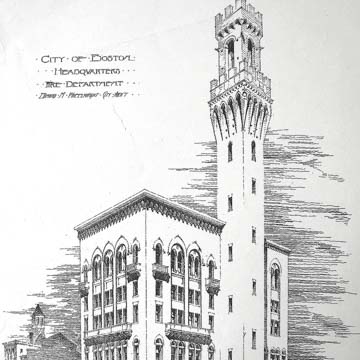You are here
Pine Street Inn (Boston Fire Department Headquarters)
A landmark along the Southeast Expressway, the Pine Street Inn, the city's largest homeless shelter, originally served as the headquarters for the Boston Fire Department. Edmund March Wheelwright, as Boston city architect, borrowed the image of the Palazzo Vecchio in Florence (using the 156-foot-high tower for the drying of fire hoses) for this yellow brick design. CBT's conversion of the fire headquarters and three adjacent buildings for the Pine Street Inn provided six floors of space for administration, dining, cooking and education and sleeping quarters for three hundred men and fifty women. The towered palazzo provides a powerful symbol for a network of more than twenty-five social service locations throughout Greater Boston.
Writing Credits
If SAH Archipedia has been useful to you, please consider supporting it.
SAH Archipedia tells the story of the United States through its buildings, landscapes, and cities. This freely available resource empowers the public with authoritative knowledge that deepens their understanding and appreciation of the built environment. But the Society of Architectural Historians, which created SAH Archipedia with University of Virginia Press, needs your support to maintain the high-caliber research, writing, photography, cartography, editing, design, and programming that make SAH Archipedia a trusted online resource available to all who value the history of place, heritage tourism, and learning.







